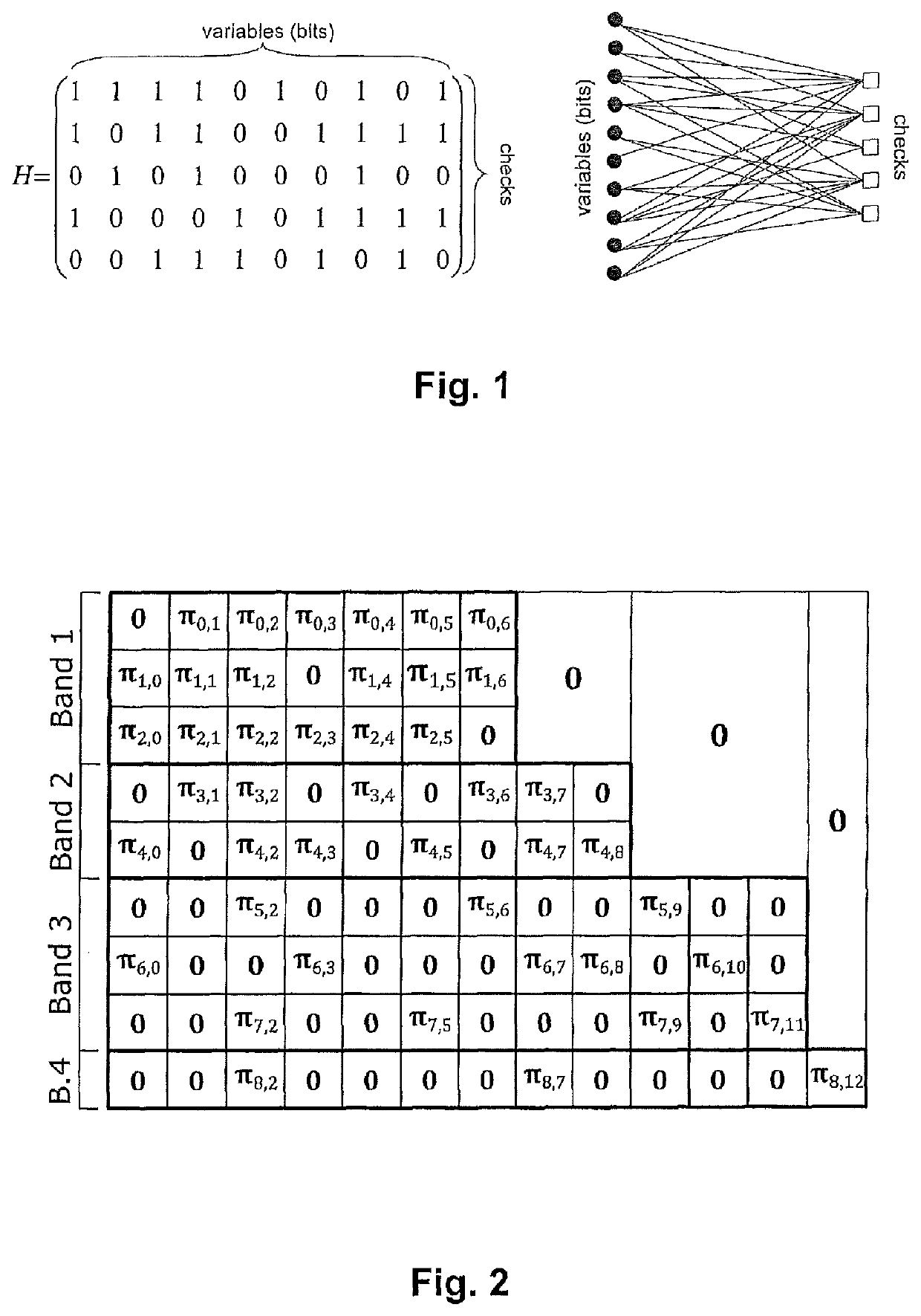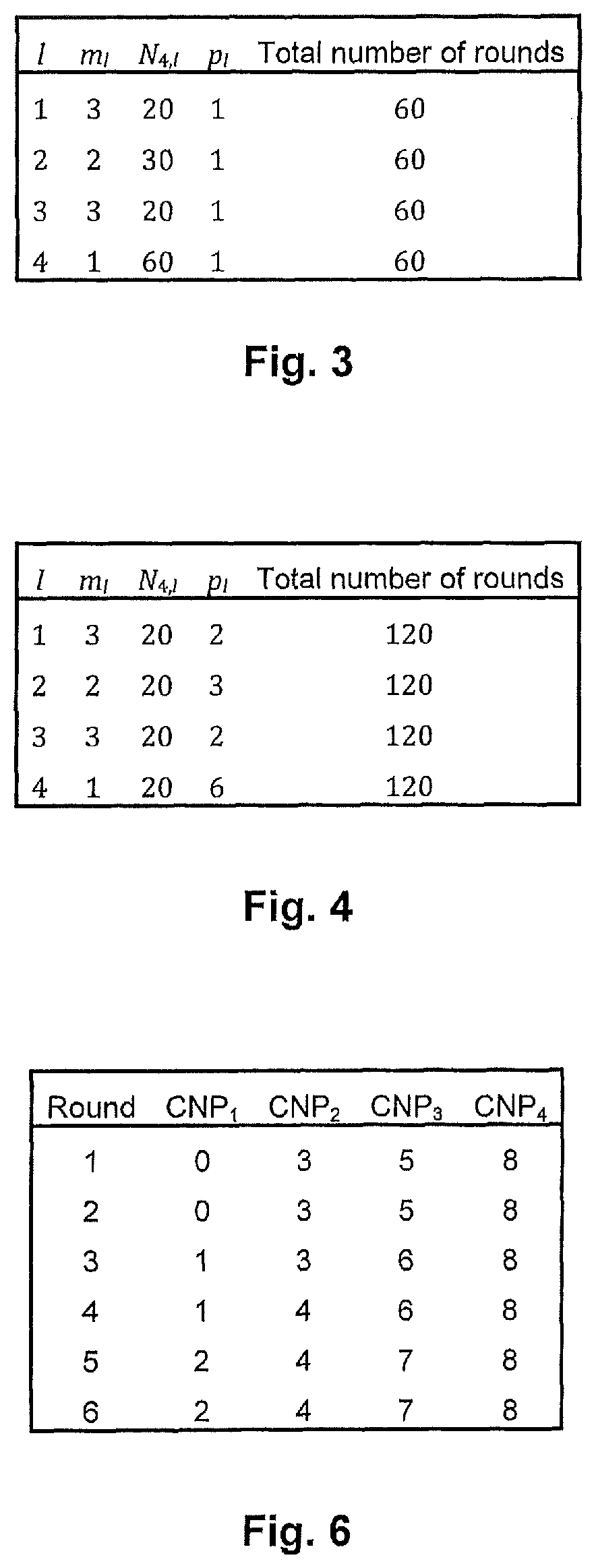Decoder for a family of rate compatible low-density parity check (LDPC) codes
a parity check and code technology, applied in the field of decoding and decoding digital data, can solve the problems of putting the best possible error correction capability, requiring a large overhead, and requiring a large amount of hardware requirements for rate compatible codes, and achieve the effect of comparatively mild computation effort to be carried out by the corresponding highest and/or second highest order check node processing units
- Summary
- Abstract
- Description
- Claims
- Application Information
AI Technical Summary
Benefits of technology
Problems solved by technology
Method used
Image
Examples
Embodiment Construction
lass="d_n">[0047]For the purposes of promoting an understanding of the principles of the invention, reference will now be made to a preferred embodiment illustrated in the drawings, and specific language will be used to describe the same. It will nevertheless be understood that no limitation of the scope of the invention is thereby intended, such alterations and further modifications in the illustrated apparatus and such further applications of the principles of the invention as illustrated therein being contemplated as would normally occur now or in the future to one skilled in the art to which the invention relates.
[0048]Various embodiments of the invention relate to a decoder and a coding schedule for decoding a family of L rate compatible parity check codes. The family of parity check codes comprises a first code that can be represented by a bipartite graph having variable nodes representing variables, check nodes representing check equations, and edges connecting each check nod...
PUM
 Login to View More
Login to View More Abstract
Description
Claims
Application Information
 Login to View More
Login to View More - R&D
- Intellectual Property
- Life Sciences
- Materials
- Tech Scout
- Unparalleled Data Quality
- Higher Quality Content
- 60% Fewer Hallucinations
Browse by: Latest US Patents, China's latest patents, Technical Efficacy Thesaurus, Application Domain, Technology Topic, Popular Technical Reports.
© 2025 PatSnap. All rights reserved.Legal|Privacy policy|Modern Slavery Act Transparency Statement|Sitemap|About US| Contact US: help@patsnap.com



